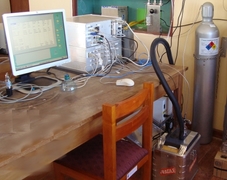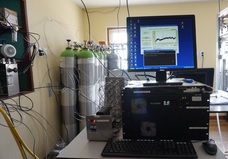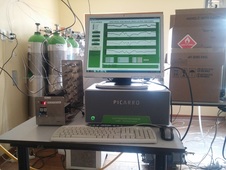|
Carbon dioxide analyzers
Three systems have been installed for different, mostly overlaping periods:
The custom-made CO2 analyzer is based on a Licor 6252 differential, non-dispersive, infrared (4.26 nm) gas analyzer. Air is pumped trough the instrument where two optical cells are used: one for the sample and the other for a reference gas. The internal pressure and temperature are controlled. As measurements should be performed in dry air, ambient moisture is trapped in a cooling system (ethanol at <-60ºC) prior to the entrance of the instrument. CO2 concentrations are stored with a one-minute resolution. Four-point calibrations are semi-automatic and perormed monthly. The Picarro instruments, both ESP-1000 and G2401, use cavity ring-down spectroscopy technology to detect CO2, CH4 and CO with a tunable laser. It is automatically calibrated every 2 weeks using a four-point calibration. In all cases, traceable standard gases are used. Target gases comply with the WMO inter-lab compatibility goal. Contact person in CHC: Laura Ticona |



